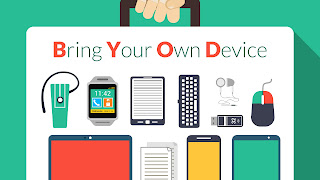Twitter Feed
Yahoo-Microsoft Merger Proxy Fight – May 14, 2008
As I alluded to last week, “It’s not over ’till it’s over” Carl Ichan Looking to Start Yahoo Proxy Fight Money – The Microsoft-Yahoo Merger may not be over. Billionaire…
Now in the ring Sun/Amazon! – May 04, 2008
The Sun/Amazon cloud may be announced soon. Sun CEO Jonathan Schwartz delivered a short keynote at Startup Camp in San Francisco, an adjunct event to the JavaOne Conference. According to…
Microsoft gives up on Yahoo? – May 04, 2008
“Cloud computing is far more than a concept. With Broadband Internet connections now all-but-ubiquitous and microcomputers and locally-run software now so trouble-prone, Cloud Computing’s time has come.” This is a…
IBM, Google and the Blue Business Platform – May 01, 2008
Today was good !! This morning. there was a main session built around “CIO 2.0”. The basic premise was that CIOs have now earned a seat at the business management…
The coming cloud – April 30, 2008
I attended the IBM Public Sector briefing this morning. The IBM executives were clearly basking in a financial performance glow. After ending 2007 with increases in revenue, profit and earnings…
Google, Cloud Computing, and the US Intelligence Community – April 29, 2008
Just arrived in Los Angeles for the IBM Business Partner Leadership Conference. IBM is billing this as a “new” conference, but I have my doubts. I am, however, very interested…
Location Based Services – April 25, 2008
INmobile.org is a exclusive community for executives in wireless industry. As a member, I have the opportunity to participate in a number of interesting discussions about mobile and wireless technology.…
IBM Business Partner Leadership Conference – April 23, 2008
I just completed registration for the IBM Business Partner Leadership Conference. This is a new invitation-only conference being held this year in Los Angeles from Wednesday, April 30th through Friday,…
Telephone & Web = WOW !! – April 21, 2008
The power of the Internet and the web lies in its ability to provide access to information. The mobile web takes this one step further with its ability to provide…
- Increased employee mobility (63%), satisfaction (56%) and productivity (55%) dominate as the top drivers of BYOD. These employee related drivers are considered more important than reduced costs (47%).
- Security (39%) and employee privacy (12%) are the biggest inhibitors of BYOD adoption.
- 20% of surveyed organizations have suffered a mobile security breach, primarily driven by malware and malicious WiFi.
- Security threats to BYOD impose heavy burdens on organizations’ IT resources (35%) and help desk workloads (27%).
- Despite increasing mobile security threats, data breaches and new regulations, only 30% of organizations are increasing security budgets for BYOD in the next 12 months and 37% have no plans to change their security budgets.
- 72% – Data leakage/loss
- 56% – Unauthorized access to company data and systems
- 54% – Downloading of unsafe apps or content
- 52% – Malware
- 50% – Lost or stolen devices
- 49% – Vulnerability exploitation
- 48% – Lack of control on endpoint security
- 39% – Infrequent software updates
- 38% – Compliance
1. Create your policy before procuring technology: To effectively use mobile device management (MDM) technology for employee owned devices Policy must precede technology. Also note that these policies will have broad corporate-wide implications for IT, HR, legal, and security.
- Mobile device management
- Application security assessments
- Application testing services
- Application source code security assessments; and
- Embedded device security.
This post was brought to you by IBM Global Technology Services. For more content like this, visit ITBizAdvisor.com.
( Thank you. If you enjoyed this article, get free updates by email or RSS – © Copyright Kevin L. Jackson 2017)
Cloud Computing
- CPUcoin Expands CPU/GPU Power Sharing with Cudo Ventures Enterprise Network Partnership
- CPUcoin Expands CPU/GPU Power Sharing with Cudo Ventures Enterprise Network Partnership
- Route1 Announces Q2 2019 Financial Results
- CPUcoin Expands CPU/GPU Power Sharing with Cudo Ventures Enterprise Network Partnership
- ChannelAdvisor to Present at the D.A. Davidson 18th Annual Technology Conference
Cybersecurity
- Route1 Announces Q2 2019 Financial Results
- FIRST US BANCSHARES, INC. DECLARES CASH DIVIDEND
- Business Continuity Management Planning Solution Market is Expected to Grow ~ US$ 1.6 Bn by the end of 2029 - PMR
- Atos delivers Quantum-Learning-as-a-Service to Xofia to enable artificial intelligence solutions
- New Ares IoT Botnet discovered on Android OS based Set-Top Boxes


